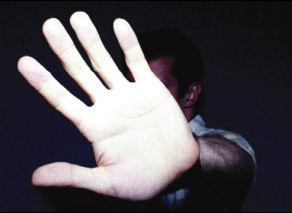 Today, photographers are generally allowed to shoot the first three songs of a performance—sometimes two songs, or even as little as 30 seconds. The three-song rule really started decades ago, but it’s often blamed when people claim concert photography isn’t as good as it used to be. I’d argue it’s a lot more complicated. The increasingly ridiculous constraints imposed on photographers are symptomatic of a music industry in danger of losing its relevance.
Today, photographers are generally allowed to shoot the first three songs of a performance—sometimes two songs, or even as little as 30 seconds. The three-song rule really started decades ago, but it’s often blamed when people claim concert photography isn’t as good as it used to be. I’d argue it’s a lot more complicated. The increasingly ridiculous constraints imposed on photographers are symptomatic of a music industry in danger of losing its relevance.
In the era of social media, cell phone cams, inexperienced photographers, and the proliferation of media outlets, some constraints are obviously necessary. But a fan can pull out a cell phone and document a concert in blurry video, while professional photographers are regularly kicked out after the first few songs. I understand bands want to maintain control over their public image, but I fail to see the logic.
Many photographers still manage to get good shots early in the show that satisfy their editors, but the real energy often doesn’t appear until later. To cite one famous example, Jimi didn’t set fire to his guitar until the end of his first show. Limited access at concerts has clearly left some wonderful musical moments undocumented, a common glaring example being not shooting a guest who sat in. Many photographers rightfully wonder whether it’s worth the effort.
While I have seen great, recent photos of live music; they usually aren’t of big-name acts. The smaller bands out there performing for the love of music still respect the role photographers play. The proportion of great photos to mediocre ones may be lower than it used to be, but the good stuff is out there, it’s just harder to find in the flood of crap.
Pop “musicians” like Madonna who limit photographers to shooting from the soundboard clearly have little (or no) respect for the profession. Most photographers have accepted the three-song challenge, but when photographers are reduced to just the first minute of a concert, shot from the soundboard, something is clearly wrong, and begs the question whether the artist has much respect for anything other than cash and maintaining a flimsy, two-dimensional persona.
Many of the most creative photos of well-known musicians in recent years were shot offstage by some of the best portrait photographers working today. Photographers like Danny Clinch and Chris Buck produce inspiring, shocking, and downright hilarious images that capture all the funky joy of creativity, but many predictable PR photos reduce bands to fashionable wallpaper. And we still need great concert shots to put everything in perspective.
The truth is, we’re at a scary, but exciting time in music history. Access to recordings has never been easier. Distribution may be changing, but the potential seems huge. People can connect with bands halfway around the world via the internet, starting an online conversation that can turn them into fans for life. But live music remains unique, and many fans do understand that a great live performance is a magical thing.
We need photographers to continue to rise to the challenge and create great images despite the constraints. Let’s ditch the big artists who provide no access and instead promote the talented, still undiscovered bands who understand what the live music experience is about. Who knows, with the help of the right photographer, they might just become the next big thing.— MATTHEW HELMINSKI



Be the first to comment!